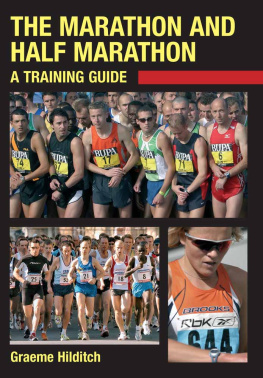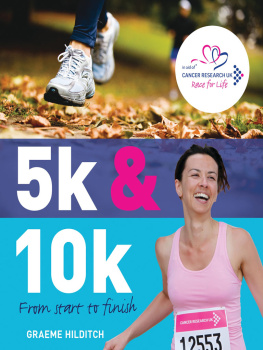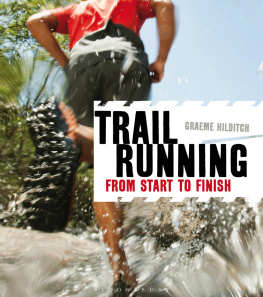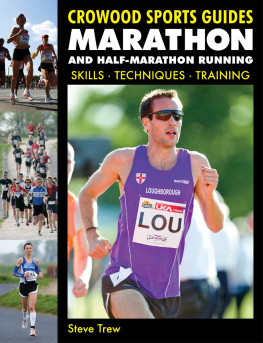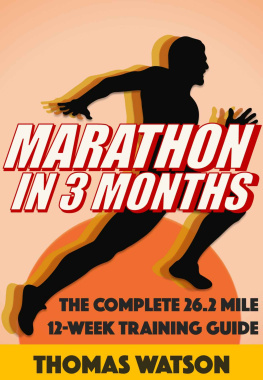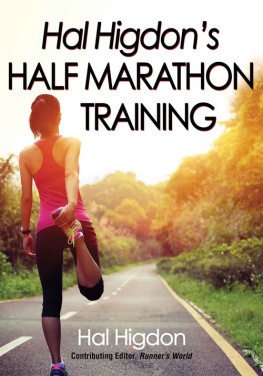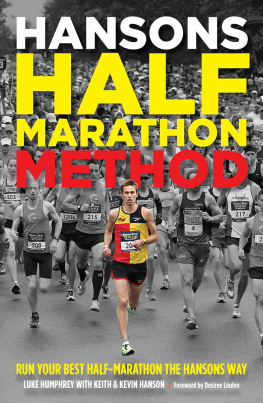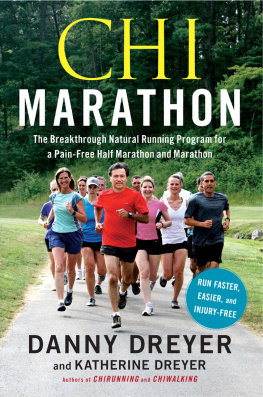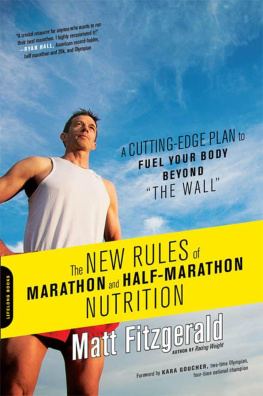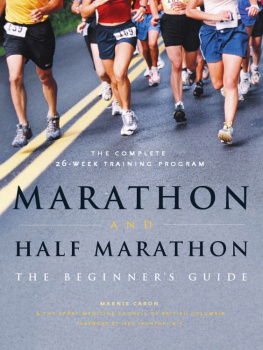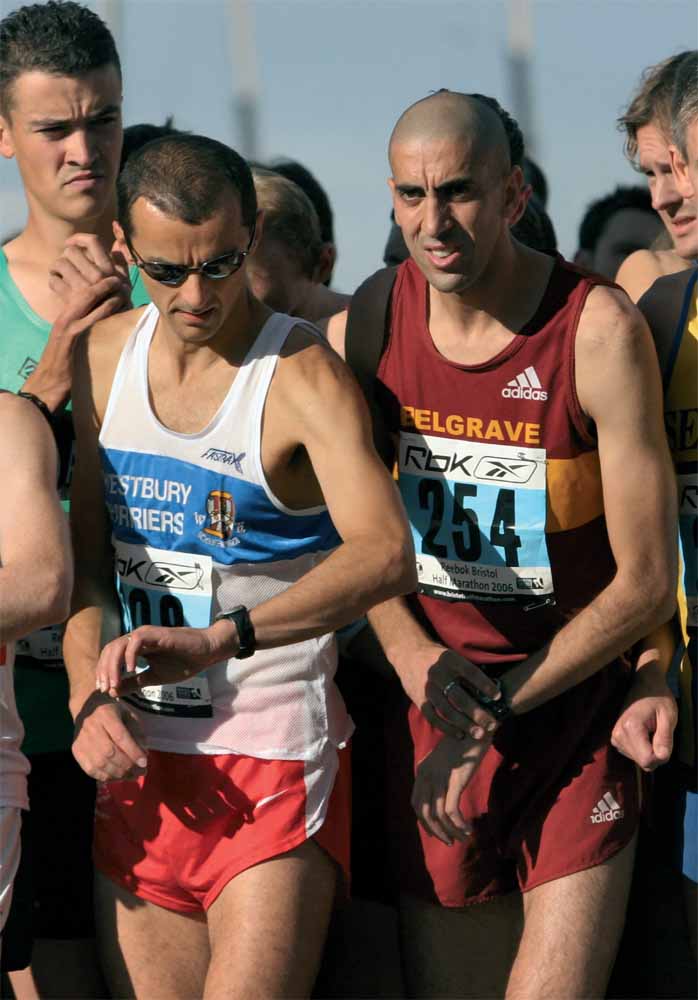THE MARATHON AND
HALF MARATHON
First published in 2007 by The Crowood Press Ltd, Ramsbury, Marlborough, Wiltshire, SN8 2HR
www.crowood.com
This e-book edition first published in 2011
Graham Hilditch2007
All rights reserved. This e-book is copyright material and must not be copied, reproduced, transferred, distributed, leased, licensed or publicly performed or used in any way except as specifically permitted in writing by the publishers, as allowed under the terms and conditions under which it was purchased or as strictly permitted by applicable copyright law. Any unauthorised distribution or use of this text may be a direct infringement of the authors and publishers rights, and those responsible may be liable in law accordingly
ISBN 978 1 84797 328 3
Disclaimer
Please note that the author and the publisher do not accept any responsibility whatsoever for any error, or omission, nor any loss, injury, damage, adverse outcome or liability suffered as a result of the information contained in this book, or reliance upon it. Since the marathon and half marathon can be dangerous and could involve physical activity that is too strenuous for some individuals to engage in safely, it is essential that a doctor be consulted before undertaking training.
Photo credits
Great Run/Peter Langdown pages .
Acknowledgements
To my forever-patient wife Jo, who has persevered with late nights and my fluctuating moods whilst I have been writing this book.
To Simon Thornley, for the kind loan of photographic equipment and his invaluable advice on sports photography.
To Wigs Cato and Zahra Severn for their time and invaluable help with the photographic element of the book. Without their help, none of the included images would have been possible.
The Cotswold Leisure Centre, for their cooperation in the use of their gym and facilities for a selection of images.
To Dartfish, Lucozade, Polar and Garmin for kindly providing imagery.
To the Bath and Bristol half marathon, the Great North Run and the London Marathon for their assistance with imagery and statistics.
And finally to my parents Lynn and Cliff, for their support and encouragement throughout my professional career.
Introduction
For many people, the mere thought of subjecting their mind, soul and cherished body to a 13.1 mile (21 kilometre) or 26.2 mile (42.1 kilometre) run, is enough to make them feel exhausted and to be frank who can blame them?
For most of us, a full-time career and twenty-four hour family commitments make the sofa and TV remote control a pair of luxury items we would happily pay to spend more time with. To contemplate sacrificing this indulgence for a tracksuit, trainers and the open road seems nothing short of crazy.
Curiosity, however, eventually gets the better of thousands of people every year. Once in a while during those precious minutes in front of the TV, a closet marathon wannabe will inadvertently tune into live coverage of a famous half or full marathon. It is then, if only for a short time, that the curiosity sets in. The sight of tens of thousands of men and women from every walk of life, all helping to raise millions for charity, subtly embeds itself into the mind and the question is quietly raised Could I do that?
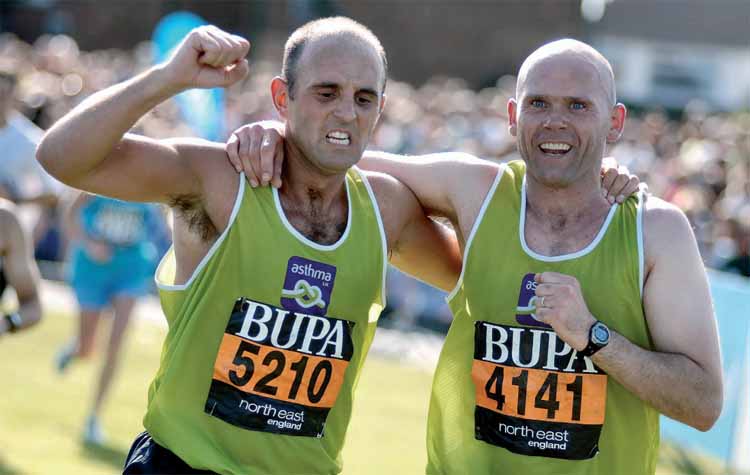
The mixed emotions of finishing an endurance race.
Did You Know
- During a marathon you will burn approximately 2,500 calories as many as an average man should consume per day.
- In 1981 there were 7,747 applicants for the London Marathon; this increased to 46,500 in 2003.
- There are in excess of 800 organized marathons in the world every year 384 in the USA alone.
- The fastest half marathon, at time of print, was run by Haile Gebrselassie of Ethiopia, who finished the Phoenix Half Marathon in Arizona in a time of 58 minutes 55 seconds. That is a pace of around 4:30 minutes/mile.
- The fastest marathon, at time of print, was run by Paul Tergat of Kenya, who completed the Berlin Marathon in a time of 2 hours, 4 minutes, 55 seconds. That is an average pace of around 4:46 minutes/mile (12.6 miles per hour/20.3 kilometres per hour).
- If you are worried about running the slowest ever marathon, dont panic. The slowest time for the event was recorded by Lloyd Scott, who crossed the finishing line in a time of 5 days, 8 hours, 29 minutes and 46 seconds. He did have a half-decent excuse, though he competed in the race wearing a 130lb (59kg) divers suit.
As much as people try to shake off the ridiculous proposition of running a marathon, once the seed is planted it simply refuses to go away. Eventually, the question of Could I do that? changes to I could do that!
The radical change of heart, from throwaway comments aimed at the TV of Those people are nuts to I reckon I could do that may take weeks, months or years; however long it has taken, the fact that you are reading this book shows it has happened to you.
The popularity of long-distance running events has increased dramatically over the past twenty years. The number of people taking part in the London Marathon since the early 1980s has increased by an amazing 500 per cent.
Running in a half or full marathon is an experience you will never forget, and it will earn you bragging rights for years to come. Whether you compete as a vegetable, a superhero or yourself, you will not only be raising valuable money for charity but you will go through a number of uplifting emotions both in your training and in the race itself that you will always remember. The whole experience will instil numerous emotions that will make you laugh and cry, but one thing is for sure you will never regret doing it.
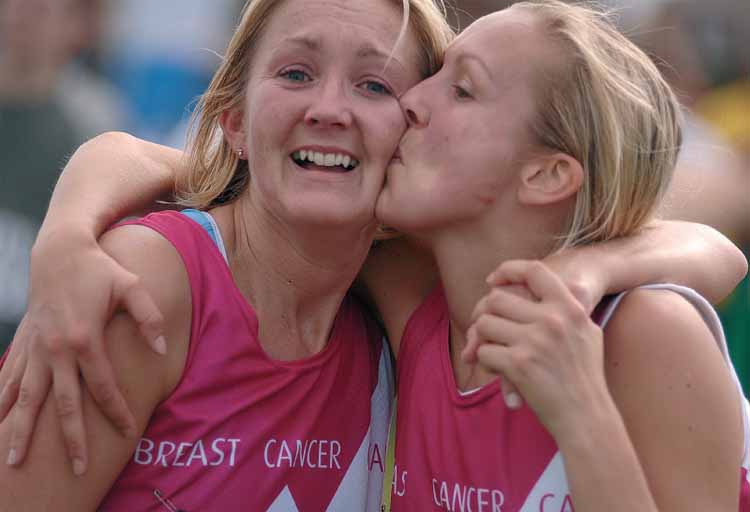
A poignant sight, typical at marathons.
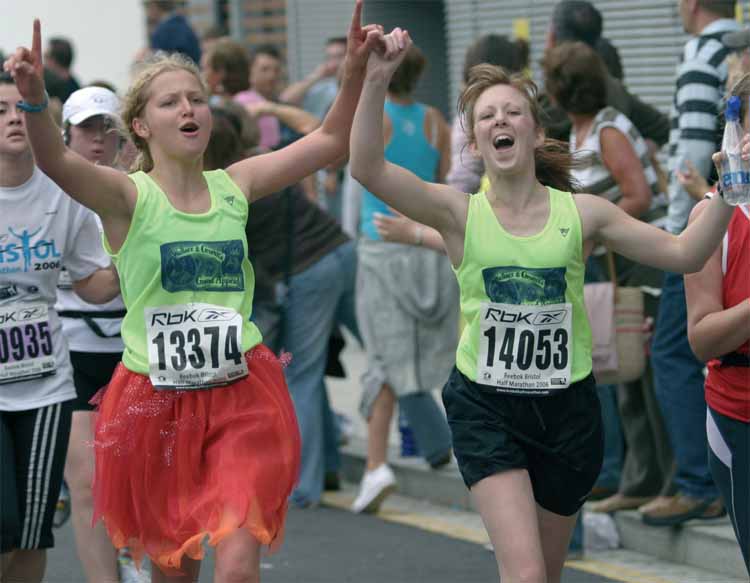
The elation of crossing the line.
Unfortunately, you cant turn up at the start line without having put some miles in those legs. In the months leading up to the race you will need to adapt your body to endure the demands of running a distance you may never have imagined possible. You will have the joy of running in beautiful sunshine, horizontal rain and maybe even snow but the training can be hugely enjoyable and give you a real sense of achievement.
This book is a step-by-step guide covering all aspects of your training, for both the full and the half marathon. From the running itself, to nutrition and the injuries you may experience, this book will help you every step of the way, guiding you through your first training run right through to the elation of crossing the finishing line.
Before you jump straight to the training programmes in , I would strongly advise you to read through all of the chapters that explain the training pro cesses. The training programmes are certainly useful to follow and offer a very good guide as to the mileage you should be covering every week, but devising a training plan to suit everyone is an impossible task despite my best efforts. Everyone will have different circumstances and times available to train, so following any of the plans to the letter could either be too easy or far too difficult. It is for this very reason that you must develop an understanding of the adaptation pro cesses involved, before you can attempt to start training. Once you understand why each session should be performed at a certain pace or length of time, you are then strongly placed to effectively rewrite the three/four month training plan to suit your individual circumstances and ability.

